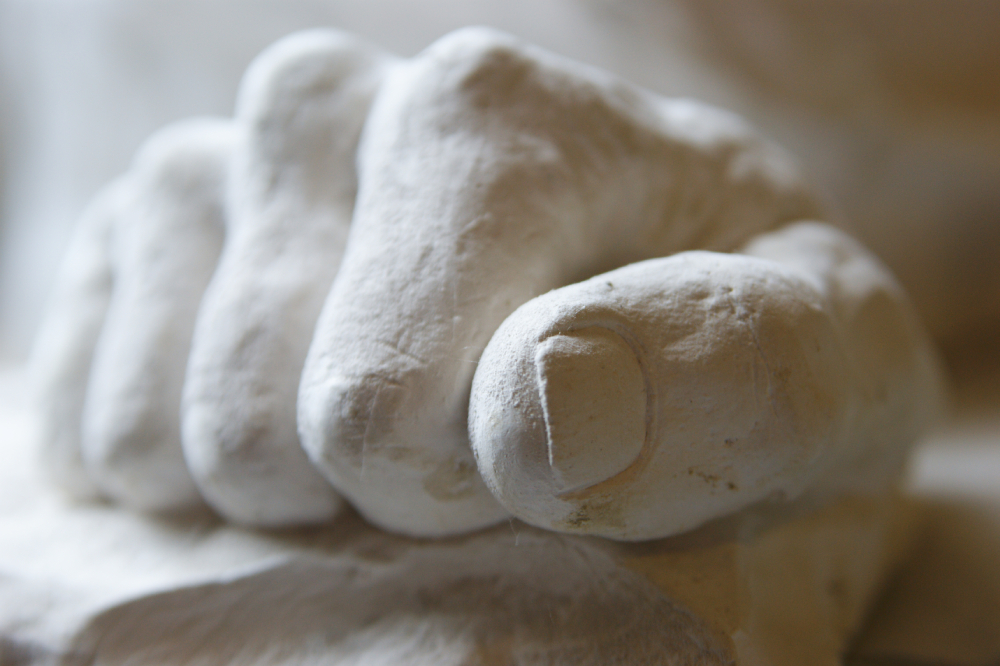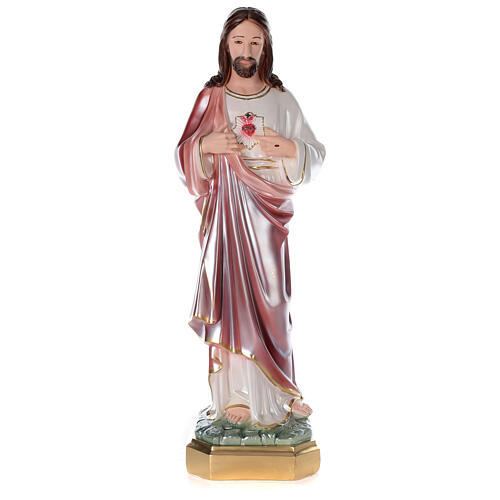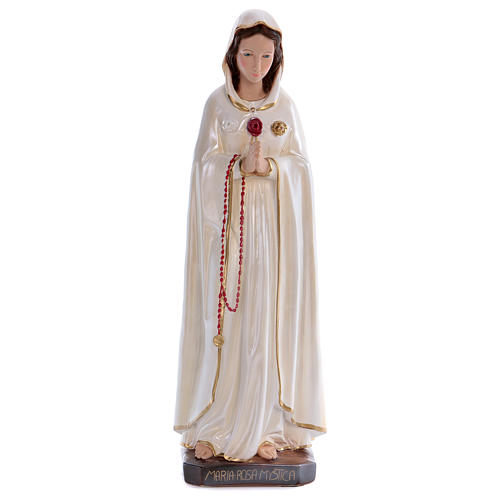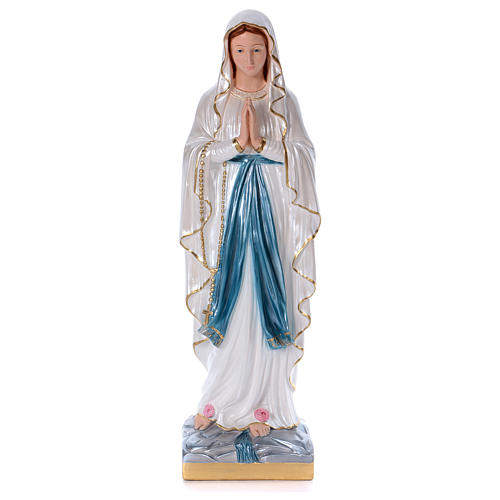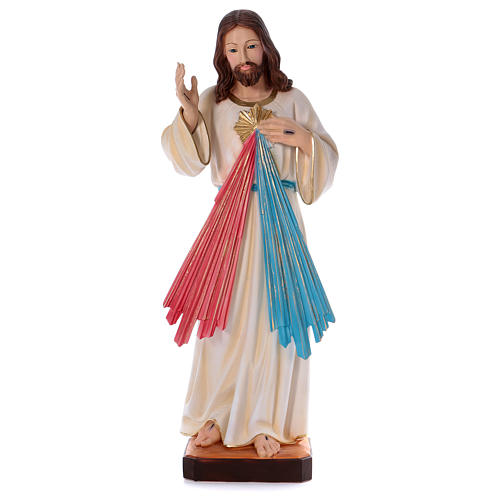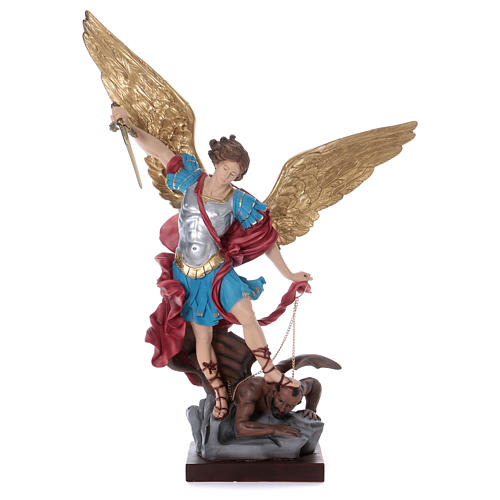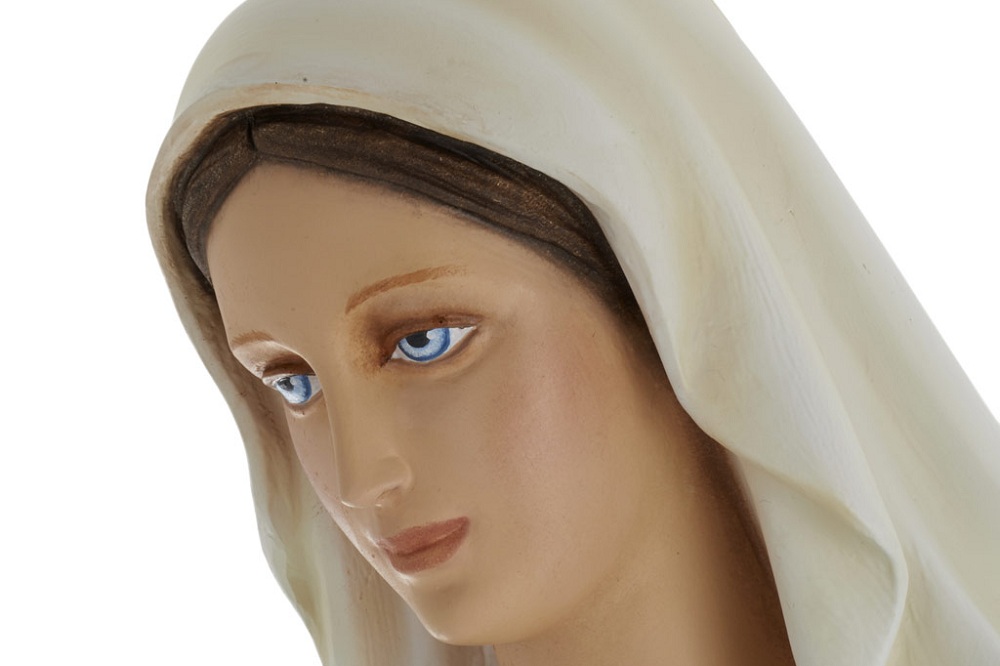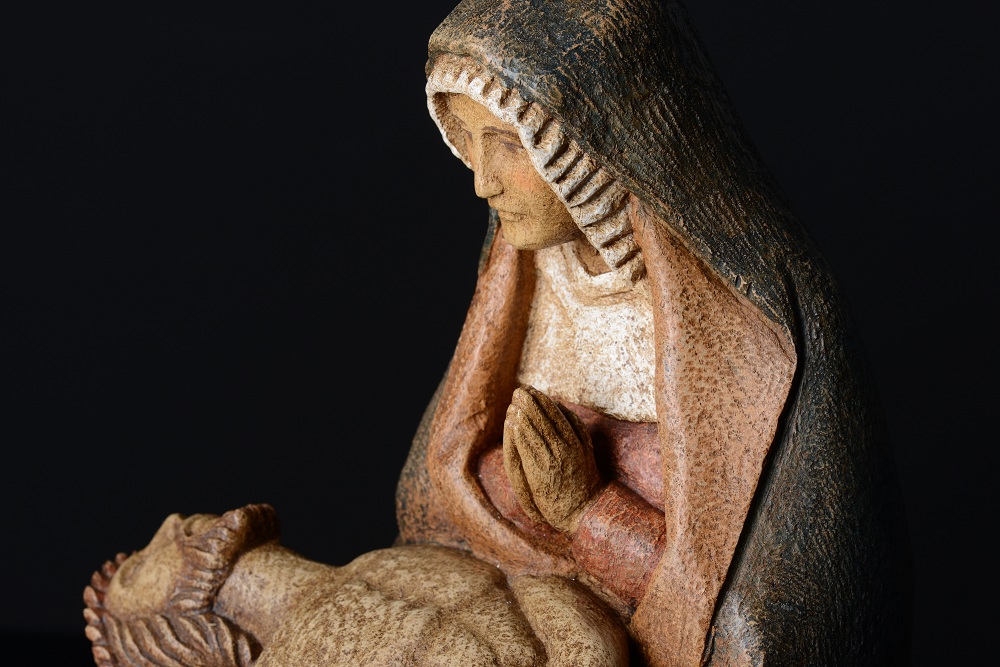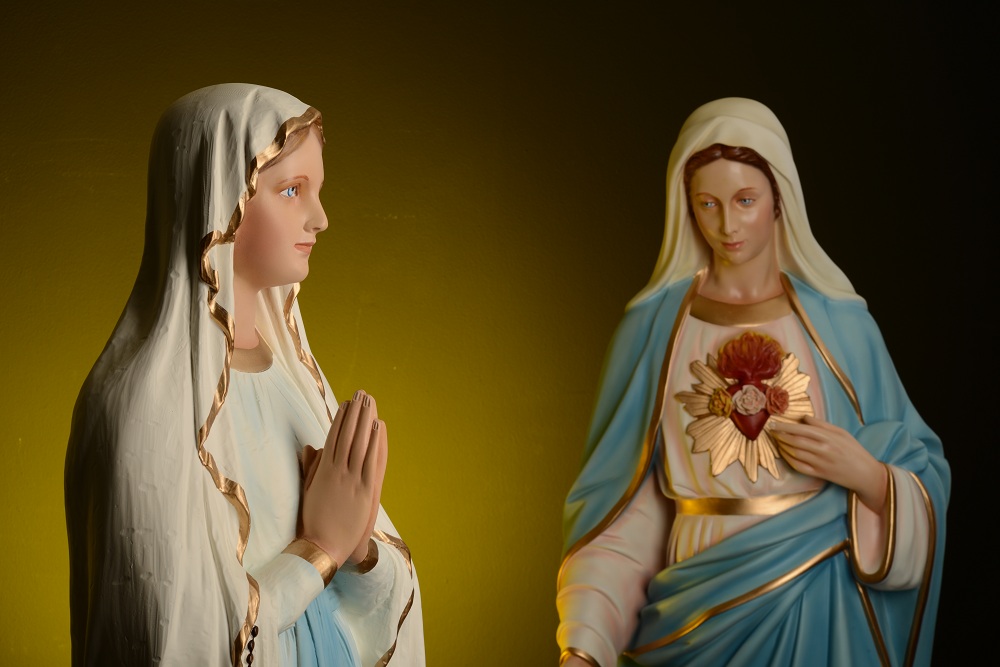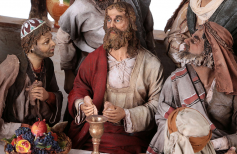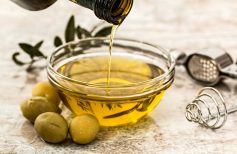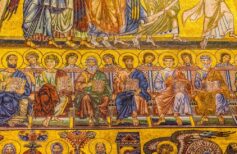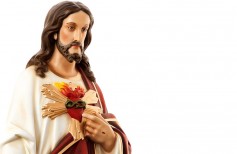Plaster sacred statues have belonged to the Italian artisan tradition since antiquity. Let’s discover this ancient and always current art.
Contents
Sacred statues and figurines of the crib in plaster: an ancient art that has characterised our country over the centuries. For those who, like us at Holyart, deal with sacred art, following and knowing the evolution of this particular artistic production is as necessary as it is appropriate. Aware of the value of sacred chalk statues in the history of art in our country, and wanting to offer in our online store only products that respect its excellence, we want to rely on suppliers who carry out their work in a handcrafted way with great professionalism and attention to detail. In a market saturated with objects made in series, without personality, especially without accuracy, Holyart prefers to stay in the opposite trend.
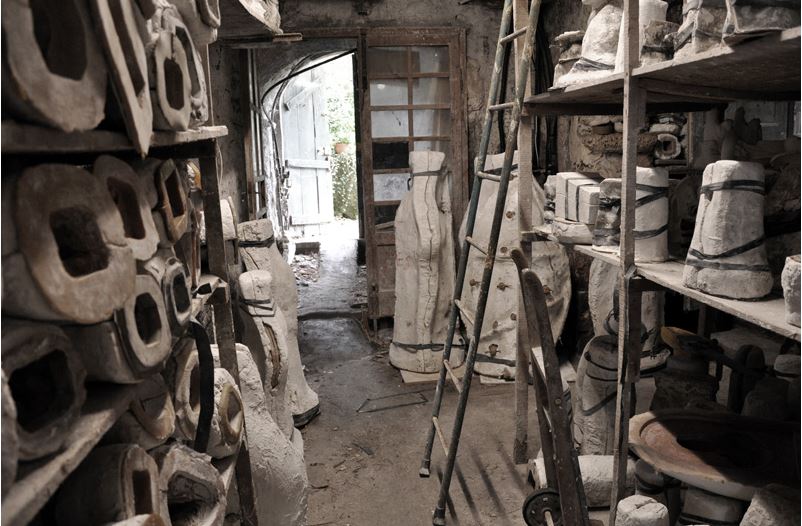
We like to get to know our suppliers in person and look among them for the most interesting stories, which often involve entire families, generations of men and women who have believed in their work to the point of investing their entire existence in it. Secrets and tricks of the trade handed down from father to son, the pride of an illustrious legacy, an authentic passion that emerges from the speeches, from the looks that light up when the products are shown. This is the craftsmanship we like, that is made by people we can talk to, to whom we can smile, while they proudly show us their company, explaining to us step by step how their products are made.
The tradition of plaster statues
Returning to the sacred plaster statues, even in the Classical era, the Roman sculptors used plaster to reproduce Greek masterpieces. This exceptionally ductile material was used to create casts, thanks to which copies could then be made.
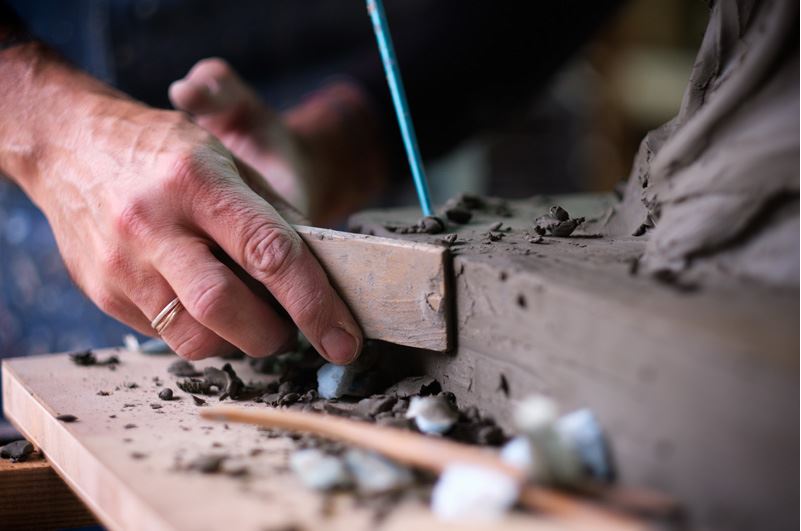
But it is during the Renaissance that the desire of many collectors to own copies of ancient works of art pushes artists to deepen the work of plaster, to the point of transforming it into real art. Ancient Greek and Roman statuary thus become an inexhaustible mine of models to which countless master craftsmen draw, who make plaster casts then used to create bronze replicas. The interest in antiquity leads to excavations and research, especially in Rome, and the fabulous finds that are made in the Eternal City contribute to feeding more and more the market of statuary copies, as well as the processing of plaster aimed at it.
In a short time, we pass from the production of plaster casts to actual statues made with this material, kept in special museums even today, gipsoteques (from ancient Greek gypsos, “plaster”), or calcoteques. Plaster statues of immortal artists, such as Antonio Canova, are kept here just to name one.
This product cannot help but convert itself over time to sacred art. The Christian cult of images, while condemning idolatry, has always encouraged the use of religious images and statues as an aid to prayer and devotion. The sacred statues in plaster and other materials housed in the churches have for centuries helped the faithful to find a more intimate and personal dimension of conversation with God, Our Lady, the Saints, making the object of their adoration visible and tangible in some way.
In Tuscany, in particular, plaster becomes the material that represents the historical tradition not only of sacred statues but also of nativity scene art. It is here, in particular in the surroundings of Bagni di Lucca, that in 1500 the Figurinai was born, artisans who once specialised in the production of stuccoes intended to embellish the noble palaces, which at a certain point began to reproduce sacred and profane statues with plaster. It was they who discovered that using plaster, a low-cost material, they could produce statues accessible to all. In a short time, driven by the scarcity of money, they also began to move and travel to sell their statues and in the 19th century, their movements led them to make their art known all over the world.
The production of sacred plaster statues and statues destined for the artisanal crib is so rooted in the territory that still today there are artisan companies that preserve and use for much of their production original moulds of 100 years ago, perpetuating a Tuscan tradition.
To companies like these, we turn to Holyart, to guarantee our customers sacred plaster statues that express all the value and excellence of a handmade product, the result of research and love for tradition, care and passion for every aspect of production, for every detail.
Although over time new processing techniques have been developed for nativity scenes and sacred plaster statues, we continue to rely on those who have been able to combine the new systems with the secrets of traditional plaster processing. Yes to mass production, but only if made with quality moulds and with greater attention to detail.
Let’s take a detailed look at the various stages of processing sacred plaster statues.
The production phases
The methods for working chalk for sacred art are handed down from generation to generation. The figure makers, the authentic ones, jealously keep their secrets, entrusting them only to those who prove to deserve to carry on this special art. They do not use modern machinery or equipment: everything is done strictly by hand, as in the past. At most, an air compressor can be used to remove dust, which is unavoidable when working chalk.
Casting
First proceed to the mixing the powdered alabaster chalk with water. The liquid chalk is poured into special moulds, which in the past were made of rubber or glue, while today they are made of silicone or latex. Since chalk when it dries creates a chemical reaction that pulls and warms, the old glue moulds lasted a maximum of seven, eight castings.
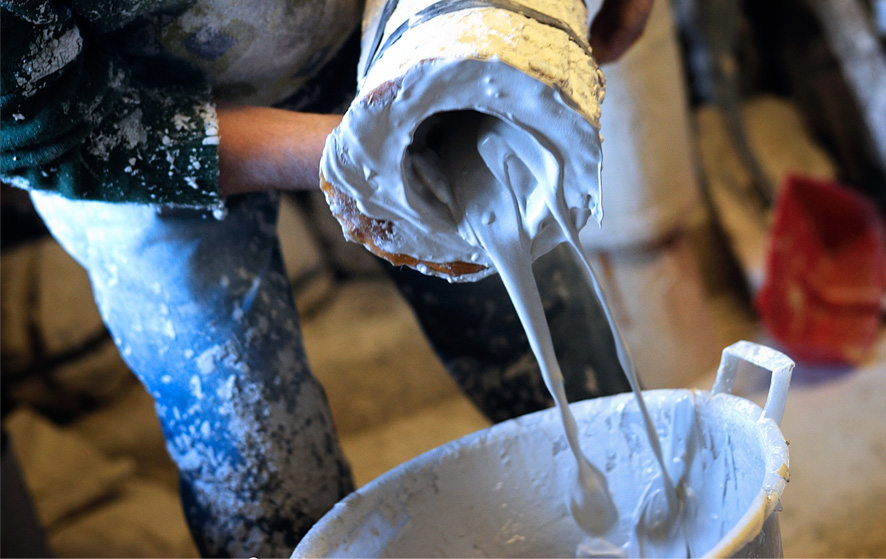
The casting phase is performed differently depending on the size of the statues. In the processing of medium and large statues, over 40 cm, which are hollow, the plaster is placed inside the mould, which is then turned and emptied. This creates a veil on the edge of the mould. To give the statue the proper thickness the casting process is repeated four or five times. Between one phase and the next, the excess chalk is eliminated. This type of processing makes it possible to produce a maximum of four large statues with a casting. Statues of one metre or more are printed one at a time.
As for the smaller statuettes, up to 30 cm, such as those plentiful ones from the nativity scene, the procedure is slightly different. The mould is filled, then it is ‘beaten’ to remove the excess chalk drops and then the statue is removed from the mould after twenty minutes, or half an hour. Up to twenty small statues can be produced with a single casting.
The large statues are reinforced with an iron core, which serves to support and make them less fragile, especially the smaller and protruding parts. Statues that exceed one metre in height are filled with jute to be more robust and impact resistant.
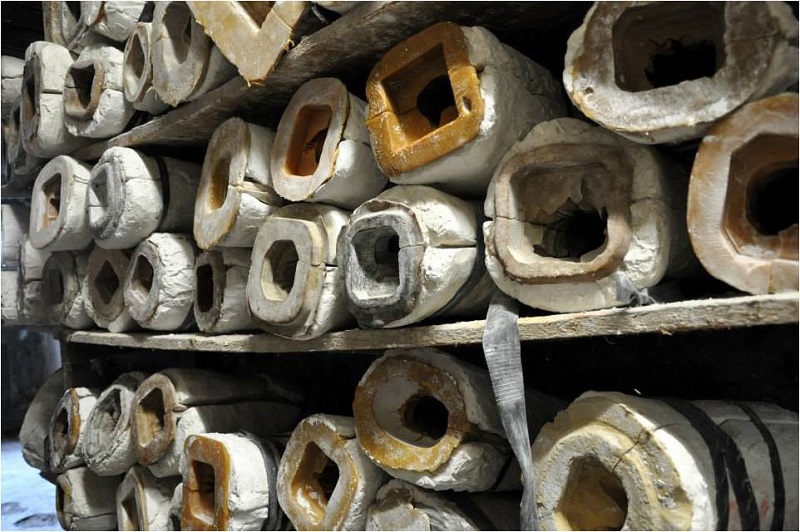
Drying
During the summer, if there is no urgency, the plaster statues are left to dry on the shelves, in the air. It takes fifteen, twenty days. Otherwise, during the winter or if there is urgency, after being ‘shelled’ from the mould, the small and large statues are put in the oven for the drying process. It is necessary to remove the excess water from the inside of the moulded plaster. The oven is different from the one used for example for terracotta, which is plainly ‘baked’. It is only used to dry, so it must maintain a low temperature, between 50°-60°.
It is also necessary to be careful to change the position of the statue because if left in the same position it risks being ruined.
With the necessary differences, and depending on whether they are full or hollow, the statues are in the oven for about two days.
Cleaning up
After being dried, the statues are finished with spatulas and glass paper. This process is very important, because being handmade, without the aid of machinery, the statues have many imperfections, they are raw. Operators also check that the product does not show the small holes left by any air bubbles. In this case, they fill the imperfections with another cast and then they take care of polishing the statue.
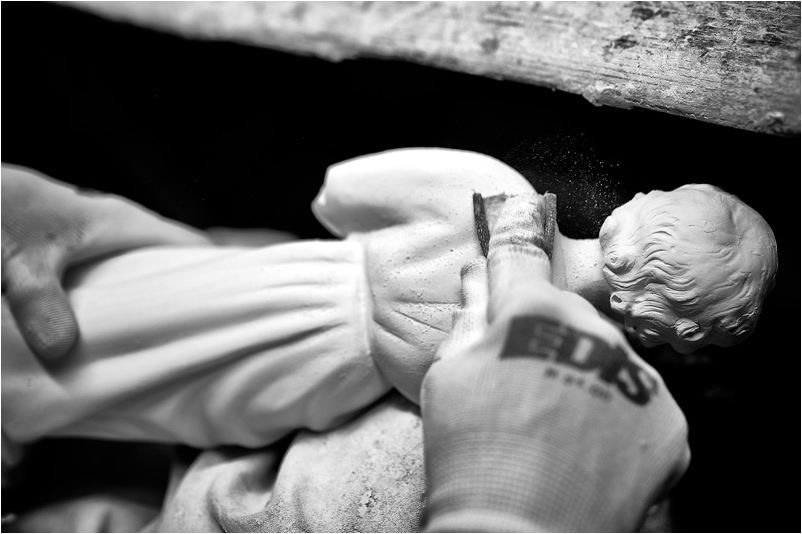
Refinishing
Some small details, or very protruding parts of the statue, cannot be made directly with the mould, because they would be too fragile and would break easily. In this case, a second step is taken on the statue, once it has been printed, dried and finished, with the process called “Rammontatura (Refinishing)”. In practice, the pieces are ‘mounted’ on the main structure.
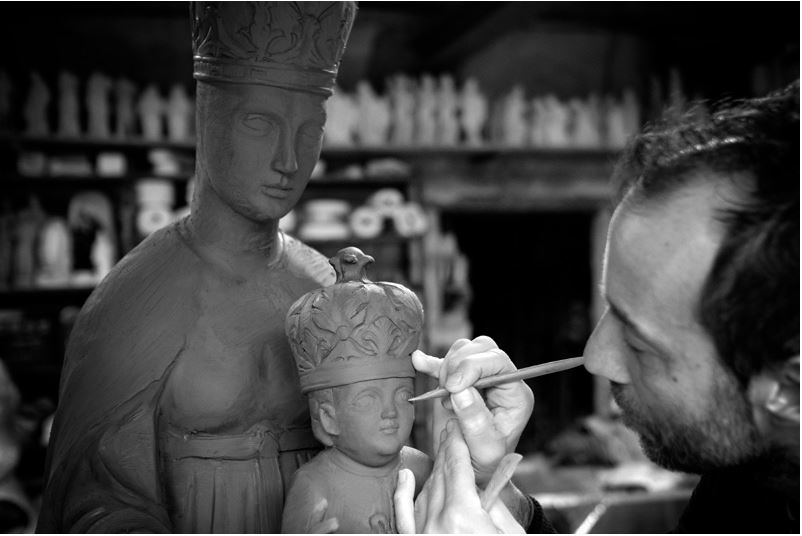
Dyeing
The colours used to decorate the plaster statues are solvent enamels, diluted in acetone. In the past cementite colours were used, which were prepared at the time, diluting the powder of the desired colour. The colours are mixed and spread all by hand, by brush.
Since the chalk is porous, if the colours were spread directly on its surface they would not flow. Initially, a layer of primer is applied, which forms a film that makes the bottom uniform and smooth. In the past, we used the vinavil with the same purpose.
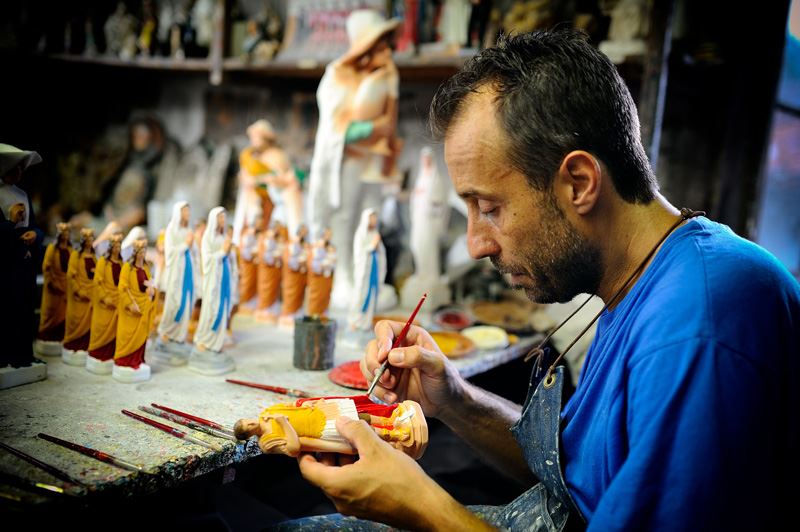
Then we move on to the colours, which are spread one at a time, starting with the light colours and gradually going with the darker ones.
Once coloured, the statue is first polished with a satin primer and then a patina is sprayed with an airbrush, which is then removed with a cloth to give the effect of ageing.
The choice of chalk
Why choose to make a sacred plaster statue rather than with another material?
If we compare alabaster chalk and resin, both used in the production of sacred statues, we will see that there are some substantial differences between the two materials. Alabaster chalk is produced in Roccastrada, in the province of Grosseto, while marble powder, or calcium carbonate, is produced in Aversa, near Massa Carrara. The main difference between a sacred resin statue and a gypsum one is that the resin can stand outside, while the gypsum if exposed to direct rain or snow, corrodes and crumbles. So if you are looking for an outdoor statue you will have to take this difference into account. The resin is then catalysed, that is, it is processed with a chemical process with the addition of a catalyst that makes it harden, while the chalk is made only of water and dust, absolutely natural. Alabaster chalk is in no way harmful to health. It does not cause allergies or particular reactions, and also the processing process to which it is subjected is entirely handmade and ecological, from the first stages until disposal.
Other materials used as an alternative to plaster to produce sacred statues and statues for nativity scenes, in addition to resin, are papier-mâché, pressed paper and, in modern times, plastic.

